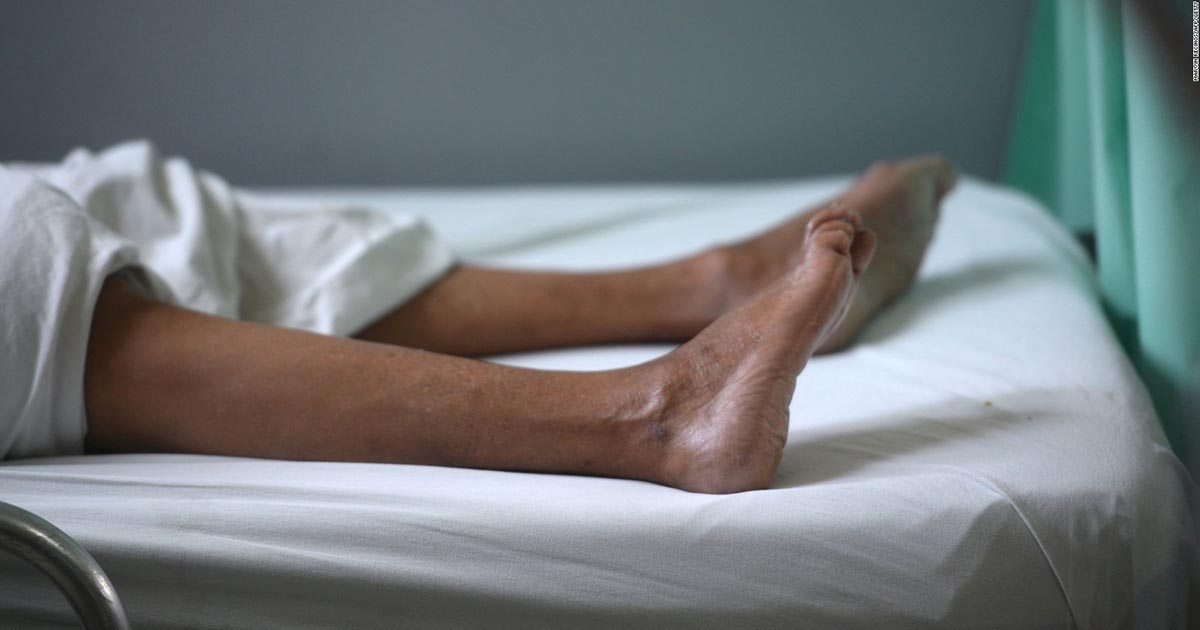Guillain Barre Syndrome 101: What You Need To Know
Approximately one out of every 100,000 individuals will be affected by a condition known as Guillain-Barre syndrome, a rare autoimmune disease that involves muscle weakness, fatigue, and respiratory issues. It can even lead to paralysis. Although this disorder is rare, Guillain-Barre syndrome is an autoimmune disease individuals should be aware of, to further help raise awareness and to offer comfort and support to those battling this illness.
Take a deep breath and jump in to discover the symptoms of Guillain-Barre syndrome, what causes this illness, and the treatment options associated with it now.
What Is Guillain-Barre Syndrome?

Guillain-Barre syndrome is a rare condition characterized by rapid-onset muscle weakness caused by the immune system that damages the peripheral nervous system. Early symptoms include changes in pain or sensation along with muscle weakness that begins in the hands and feet but often spreads to the arms and upper body. These symptoms, along with others, can develop within a matter of hours or over a few weeks, and can eventually paralyze the whole body, depending on the type and severity.
At its most severe, this disorder becomes a medical emergency, where patients can only receive treatment in a hospital and often have an extensive recovery period. During its acute phase, Guillain-Barre syndrome can be life-threatening, and approximately fifteen percent of patients develop weakness of the breathing muscles requiring mechanical ventilation. Others may be affected by changes in the function of their autonomic nervous system, which can lead to critical abnormalities in their heart rate and blood pressure.
Still curious about this rare disorder? Keep reading to find out the different types of this rare disease.
The Different Types

There are numerous forms of Guillain-Barre syndrome, including acute inflammatory demyelinating polyradiculoneuropathy (AIDP), Miller Fisher syndrome (MFS), as well as acute motor axonal neuropathy (AMAN) and acute motor-sensory axonal neuropathy (AMSAN). AIDP is the most common type in the United States, and its most common symptom is muscle weakness that starts in the lower extremities and spreads upward. Miller Fisher syndrome is characterized by paralysis beginning in the eyes and is associated with an unsteady gait. It occurs in only five percent of Americans but is most common in Asia. AMAN and AMSAN are the least common in the United States and are more frequent in China, Japan, and Mexico.
Continue reading to learn details about symptoms of Guillain-Barre syndrome everyone should be aware of.
Symptoms

Typically, about half of the individuals afflicted with Guillain-Barre syndrome had symptoms begin on their face or arms. As this rare disorder progresses, muscle weakness can evolve into paralysis. Symptoms of this condition include prickling, pins and needles sensations in the fingers, toes, ankles or wrists, weakness in the lower extremities that travel to the upper body, unsteady walking or an inability to climb stairs, and difficulty with eye and facial movements including speaking, chewing or swallowing. Other signs include severe pain that can feel like cramps that can worsen at night, difficulty with bladder control or bowel function, a rapid heart rate, low or high blood pressure, and difficulty breathing. Guillain-Barre syndrome patients typically experience their most significant weakness within two to four weeks after their initial symptoms begin.
Next, discover the causes of this disorder and how it affects the immune system.
What Causes This Condition?

Guillain-Barre syndrome is a rare autoimmune disorder in which the body’s immune system mistakenly attacks the peripheral nerves and damages their myelin insulation, and this immune dysfunction can be triggered by an infection, surgery, or vaccination. The damage prevents the nerves from transmitting signals to the brain, resulting in the patient becoming weak and experiencing numbness or paralysis. The exact causes of Guillain-Barre syndrome are unknown, and this disorder usually appears a couple of days or weeks following a respiratory or digestive tract infection. In rare instances, a recent surgery or vaccine a patient has received can trigger Guillain-Barre syndrome, however, there has recently been a few cases reported following an individual becoming infected with the Zika virus.
Guillain Barre syndrome does not discriminate as it can affect all age groups and ethnicities. However, young adult males are at the highest risk of developing it. This disorder is triggered by an infection with Campylobacter, a form of bacteria found in undercooked poultry; the influenza virus; cytomegalovirus; Epstein-Barr virus; Hepatitis A, B, C, and E; as well as the human immunodeficiency virus (HIV). Other viruses that can trigger Guillain-Barre syndrome include mycoplasma pneumonia and Hodgkin’s lymphoma.
Get familiar with the complications of Guillain-Barre syndrome next.
Complications

Complications associated with Guillain-Barre syndrome include breathing difficulties, residual numbness or similar sensations, heart and blood pressure issues, intense pain, bowel and bladder problems, pressure sores, and an increased risk of developing blood clots. Additionally, three percent of all individuals afflicted have a chance of relapsing. Severe and early symptoms of Guillain-Barre syndrome significantly increases the risk of critical long-term complications. In rare instances, death can occur from complications associated with respiratory distress syndrome and a heart attack.
Although it is rare, there are treatments available to help Guillain-Barre syndrome patients. Keep reading to reveal the major treatment options available to patients today.
Treatment Options

Unfortunately, there is no cure for Guillain-Barre syndrome, although there are treatment options. This condition is serious and requires immediate hospitalization as it can worsen rapidly, and the sooner treatment is started, the better the patient's chance of a great outcome. Two forms of treatment can speed up recovery and reduce the severity of the illness including plasma exchange and immunoglobulin therapy. A plasma exchange, known as plasmapheresis, is when the liquid portion of the blood (plasma) is removed and separated from the blood cells, and then the blood cells are put back into the body, creating more plasma to make up for what was removed.
This may work by ridding plasma of certain antibodies that contribute to the immune system attacking the peripheral nerves. Immunoglobulin therapy is when immunoglobulin containing healthy antibodies from blood donors are given through a vein intravenously, and high doses of it can block the damaging antibodies that can contribute to this illness. Patients with Guillain-Barre syndrome are also likely to be given medication that can relieve their severe pain and prevent blood clots from developing. Patients may also need physical help and therapy before and during their recovery due to their muscles weakening and limited mobility.